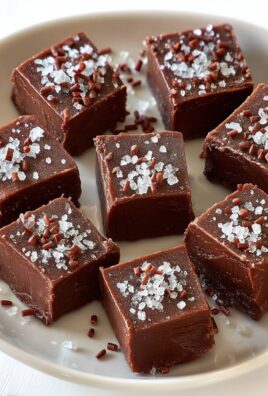Clootie Dumpling: Just the name conjures up images of cozy Scottish kitchens, the scent of warm spices filling the air, and a comforting sweetness that warms you from the inside out. Have you ever tasted a dessert that feels like a hug? That’s exactly what a Clootie Dumpling is! This traditional Scottish steamed pudding, rich with dried fruit and spices, is more than just a dessert; it’s a taste of history and a celebration of heritage.
The “cloot” in Clootie Dumpling refers to the cloth in which the dumpling is cooked, traditionally a floured linen cloth. This method of steaming imparts a unique texture and subtle flavor that you simply can’t replicate any other way. While its exact origins are shrouded in the mists of time, Clootie Dumpling has been a staple in Scottish households for generations, often served at Hogmanay (New Year’s Eve) and other special occasions.
But what makes this Clootie Dumpling so beloved? It’s the perfect combination of textures a slightly crisp exterior giving way to a moist, dense interior bursting with the flavors of currants, raisins, and warming spices like cinnamon and ginger. It’s incredibly satisfying, easy to slice, and even easier to enjoy with a dollop of custard or a scoop of vanilla ice cream. Plus, the process of making it, while requiring some patience, is a rewarding experience that connects you to a culinary tradition. So, are you ready to embark on a delicious journey and create your own piece of Scottish heritage? Let’s get started!
Ingredients:
- For the Dry Ingredients:
- 500g Self-Raising Flour
- 250g Suet (shredded), either beef or vegetable
- 1 tsp Bicarbonate of Soda
- 1 tsp Ground Ginger
- 1 tsp Ground Cinnamon
- ½ tsp Ground Nutmeg
- Pinch of Salt
- For the Wet Ingredients:
- 250g Mixed Dried Fruit (raisins, sultanas, currants)
- 50g Chopped Dried Apricots
- 50g Dark Brown Sugar
- 300ml Milk (or a mixture of milk and treacle water – see instructions)
- 2 tbsp Black Treacle
- 1 Medium Apple, peeled, cored, and grated
- For Cooking:
- Large Cotton Cloth (cloot), approximately 60cm x 60cm
- String (kitchen twine)
- Large Stockpot or Pan
Preparing the Cloot
Before we even think about mixing the ingredients, let’s get the cloot ready. This is arguably the most important part, as a poorly prepared cloot can lead to a soggy or even burst dumpling! I like to use a piece of unbleached cotton, like an old pillowcase or tea towel, that’s been washed many times. Avoid using anything with strong dyes or scents, as these can leach into the dumpling.
- Wash and Prepare the Cloot: Make sure your cloot is clean and free from any detergent residue. Give it a good rinse in hot water.
- Flouring the Cloot: This is crucial! Lay the damp cloot out on a clean surface. Generously sprinkle it with plain flour, ensuring the entire surface is covered. Don’t be shy with the flour; it’s what prevents the dumpling from sticking. Rub the flour into the cloth, paying attention to the creases and folds. Shake off any excess flour.
Mixing the Dumpling Batter
Now for the fun part! This is where all the delicious flavors come together. I find it easiest to use a large mixing bowl for this, giving you plenty of room to work.
- Combine Dry Ingredients: In your large mixing bowl, add the self-raising flour, shredded suet, bicarbonate of soda, ground ginger, ground cinnamon, ground nutmeg, and salt. Use your fingertips to rub the suet into the flour. This helps to distribute it evenly and prevents it from clumping. The mixture should resemble breadcrumbs.
- Add Dried Fruit and Sugar: Add the mixed dried fruit, chopped dried apricots, and dark brown sugar to the bowl. Give everything a good stir to combine.
- Grate the Apple: Peel, core, and grate the apple. Add it to the bowl. The apple adds moisture and a lovely subtle sweetness to the dumpling.
- Mix Wet Ingredients: In a separate jug, combine the milk and black treacle. If you want to add a traditional touch, you can use “treacle water” instead of plain milk. To make treacle water, simply rinse out the treacle tin with hot water and use that liquid to make up the required amount of milk. This adds an extra depth of treacle flavor.
- Combine Wet and Dry: Gradually pour the wet ingredients into the dry ingredients, mixing continuously with a wooden spoon or spatula. Be careful not to overmix; you want everything just combined. The batter should be quite wet and sticky.
Wrapping and Shaping the Dumpling
This step requires a bit of dexterity, but don’t worry, it’s easier than it looks! The key is to work quickly and confidently.
- Place Batter on Cloot: Carefully spoon the dumpling batter into the center of the floured cloot. Try to form it into a round shape, leaving enough space around the edges of the cloth to gather it up.
- Gather the Cloot: Bring the edges of the cloot together above the dumpling, gathering it tightly. Twist the cloot to form a pouch around the dumpling.
- Tie Securely: Tie the cloot tightly with kitchen twine, close to the dumpling. Make sure the knot is secure, as you don’t want the dumpling to unravel during cooking. Leave a long end of the string so you can use it to lift the dumpling out of the water later.
- Shape the Dumpling: Gently pat the dumpling into a round shape through the cloth. This helps to ensure even cooking.
Cooking the Clootie Dumpling
Now for the long, slow simmer that transforms the batter into a delicious, moist dumpling. Patience is key here!
- Prepare the Stockpot: Fill a large stockpot or pan with enough water to completely submerge the dumpling. Bring the water to a rolling boil.
- Simmer the Dumpling: Carefully lower the wrapped dumpling into the boiling water. Ensure it’s fully submerged. Reduce the heat to a gentle simmer.
- Cook for 3-4 Hours: Cover the pot and simmer the dumpling for 3-4 hours, depending on its size. Check the water level periodically and add more boiling water if necessary to keep the dumpling submerged.
- Check for Doneness: After 3 hours, check the dumpling for doneness. Insert a skewer or toothpick through the cloth into the center of the dumpling. If it comes out clean, the dumpling is cooked. If it’s still wet, continue simmering for another 30 minutes and check again.
Drying and Serving
Almost there! This final step helps to dry out the outside of the dumpling and give it a lovely crust.
- Remove from Water: Carefully lift the dumpling out of the water using the string. Be careful, as it will be very hot!
- Dry the Dumpling: Place the dumpling on a wire rack to dry. You can also place it in a warm oven (around 100°C/200°F) for about 30 minutes to help it dry out further. This will give it a slightly crispier crust.
- Remove the Cloot: Once the dumpling is cool enough to handle, carefully remove the cloot.
- Serve and Enjoy: Slice the clootie dumpling and serve it warm with custard, cream, or even just a knob of butter. It’s also delicious cold. Enjoy!
Tips and Variations:
- Suet Alternatives: If you can’t find suet, you can use butter or shortening as a substitute, but the texture will be slightly different.
- Spice Variations: Feel free to adjust the spices to your liking. You could add a pinch of ground cloves or allspice for a different flavor profile.
- Fruit Variations: Experiment with different dried fruits, such as cranberries, cherries, or figs.
- Boozy Dumpling: For an adult twist, add a tablespoon or two of whisky or rum to the batter.
- Leftovers: Leftover clootie dumpling can be stored in an airtight container in the refrigerator for up to 3 days. Reheat it in the microwave or oven before serving. You can also slice it and fry it in butter for a delicious breakfast treat.
Troubleshooting:
- Dumpling is too wet: Make sure you’re using self-raising flour and that your bicarbonate of soda is fresh. Also, ensure you’re not overmixing the batter.
- Dumpling is too dry: Add a little more milk to the batter.
- Dumpling is sticking to the cloot: Make sure you’re using plenty of flour on the cloot and that you’re rubbing it in well.
- Dumpling burst during cooking: Make sure the cloot is tied securely and that you’re not overfilling it. Also, ensure the water is simmering gently, not boiling vigorously.

Conclusion:
So, there you have it! This Clootie Dumpling recipe is more than just a dessert; it’s a journey back in time, a warm hug on a cold day, and a guaranteed crowd-pleaser. I truly believe that once you taste the rich, spiced flavors and the wonderfully moist texture, you’ll understand why this traditional Scottish treat has been cherished for generations. It’s a must-try for anyone who appreciates authentic, comforting food.
But why is this particular recipe a must-try? Well, beyond its historical significance and deliciousness, it’s surprisingly adaptable. I’ve streamlined the process to make it achievable for even novice bakers, without sacrificing any of the traditional charm. The detailed instructions and helpful tips will guide you every step of the way, ensuring a successful and satisfying baking experience. Plus, the aroma that fills your kitchen as it steams is simply divine!
And the best part? The possibilities are endless! While traditionally served warm with custard or cream, don’t be afraid to experiment. A dollop of vanilla ice cream is a delightful alternative, or you could try a drizzle of golden syrup for extra sweetness. For a truly decadent experience, serve it with a generous helping of whisky cream the perfect pairing for a special occasion.
Looking for variations? Consider adding different dried fruits, such as apricots or cranberries, to the mixture. A sprinkle of chopped nuts, like walnuts or pecans, can also add a lovely textural element. For a more intense spice flavor, increase the amount of mixed spice or add a pinch of ground cloves. You could even experiment with different types of suet vegetarian suet works just as well and offers a lighter alternative.
This Clootie Dumpling recipe is truly a blank canvas for your culinary creativity!
Don’t be intimidated by the steaming process it’s much easier than it sounds. Just make sure you have a large pot with a tight-fitting lid and a clean tea towel (the “cloot”) ready to go. And remember, patience is key! The long steaming time is essential for developing the dumpling’s characteristic moistness and flavor.
I’m so excited for you to try this recipe and experience the magic of Clootie Dumpling for yourself. It’s a dish that’s perfect for sharing with family and friends, and it’s sure to become a new favorite in your household.
So, what are you waiting for? Gather your ingredients, dust off your steaming pot, and get ready to embark on a delicious adventure. I’m confident that you’ll be delighted with the results.
And most importantly, I’d love to hear about your experience! Did you try any variations? What did you serve it with? What did your family think? Please share your photos and stories in the comments below. Your feedback is invaluable, and it helps me to continue creating and sharing recipes that you’ll love. Happy baking! I can’t wait to see your Clootie Dumpling creations!
Clootie Dumpling: A Traditional Scottish Recipe You'll Love
A traditional Scottish Clootie Dumpling, a steamed fruit pudding cooked in a floured cloth. Rich, moist, and spiced, it's a festive treat perfect with custard or cream.
Ingredients
- 500g Self-Raising Flour
- 250g Suet (shredded), either beef or vegetable
- 1 tsp Bicarbonate of Soda
- 1 tsp Ground Ginger
- 1 tsp Ground Cinnamon
- ½ tsp Ground Nutmeg
- Pinch of Salt
- 250g Mixed Dried Fruit (raisins, sultanas, currants)
- 50g Chopped Dried Apricots
- 50g Dark Brown Sugar
- 300ml Milk (or a mixture of milk and treacle water)
- 2 tbsp Black Treacle
- 1 Medium Apple, peeled, cored, and grated
- Large Cotton Cloth (cloot), approximately 60cm x 60cm
- String (kitchen twine)
- Large Stockpot or Pan
Instructions
- Wash and Prepare the Cloot: Make sure your cloot is clean and free from any detergent residue. Give it a good rinse in hot water.
- Flouring the Cloot: Lay the damp cloot out on a clean surface. Generously sprinkle it with plain flour, ensuring the entire surface is covered. Don’t be shy with the flour; it’s what prevents the dumpling from sticking. Rub the flour into the cloth, paying attention to the creases and folds. Shake off any excess flour.
- Combine Dry Ingredients: In your large mixing bowl, add the self-raising flour, shredded suet, bicarbonate of soda, ground ginger, ground cinnamon, ground nutmeg, and salt. Use your fingertips to rub the suet into the flour. This helps to distribute it evenly and prevents it from clumping. The mixture should resemble breadcrumbs.
- Add Dried Fruit and Sugar: Add the mixed dried fruit, chopped dried apricots, and dark brown sugar to the bowl. Give everything a good stir to combine.
- Grate the Apple: Peel, core, and grate the apple. Add it to the bowl. The apple adds moisture and a lovely subtle sweetness to the dumpling.
- Mix Wet Ingredients: In a separate jug, combine the milk and black treacle. If you want to add a traditional touch, you can use “treacle water” instead of plain milk. To make treacle water, simply rinse out the treacle tin with hot water and use that liquid to make up the required amount of milk. This adds an extra depth of treacle flavor.
- Combine Wet and Dry: Gradually pour the wet ingredients into the dry ingredients, mixing continuously with a wooden spoon or spatula. Be careful not to overmix; you want everything just combined. The batter should be quite wet and sticky.
- Place Batter on Cloot: Carefully spoon the dumpling batter into the center of the floured cloot. Try to form it into a round shape, leaving enough space around the edges of the cloth to gather it up.
- Gather the Cloot: Bring the edges of the cloot together above the dumpling, gathering it tightly. Twist the cloot to form a pouch around the dumpling.
- Tie Securely: Tie the cloot tightly with kitchen twine, close to the dumpling. Make sure the knot is secure, as you don’t want the dumpling to unravel during cooking. Leave a long end of the string so you can use it to lift the dumpling out of the water later.
- Shape the Dumpling: Gently pat the dumpling into a round shape through the cloth. This helps to ensure even cooking.
- Prepare the Stockpot: Fill a large stockpot or pan with enough water to completely submerge the dumpling. Bring the water to a rolling boil.
- Simmer the Dumpling: Carefully lower the wrapped dumpling into the boiling water. Ensure it’s fully submerged. Reduce the heat to a gentle simmer.
- Cook for 3-4 Hours: Cover the pot and simmer the dumpling for 3-4 hours, depending on its size. Check the water level periodically and add more boiling water if necessary to keep the dumpling submerged.
- Check for Doneness: After 3 hours, check the dumpling for doneness. Insert a skewer or toothpick through the cloth into the center of the dumpling. If it comes out clean, the dumpling is cooked. If it’s still wet, continue simmering for another 30 minutes and check again.
- Remove from Water: Carefully lift the dumpling out of the water using the string. Be careful, as it will be very hot!
- Dry the Dumpling: Place the dumpling on a wire rack to dry. You can also place it in a warm oven (around 200°F/100°C) for about 30 minutes to help it dry out further. This will give it a slightly crispier crust.
- Remove the Cloot: Once the dumpling is cool enough to handle, carefully remove the cloot.
- Serve and Enjoy: Slice the clootie dumpling and serve it warm with custard, cream, or even just a knob of butter. It’s also delicious cold. Enjoy!
Notes
- Suet Alternatives: If you can’t find suet, you can use butter or shortening as a substitute, but the texture will be slightly different.
- Spice Variations: Feel free to adjust the spices to your liking. You could add a pinch of ground cloves or allspice for a different flavor profile.
- Fruit Variations: Experiment with different dried fruits, such as cranberries, cherries, or figs.
- Boozy Dumpling: For an adult twist, add a tablespoon or two of whisky or rum to the batter.
- Leftovers: Leftover clootie dumpling can be stored in an airtight container in the refrigerator for up to 3 days. Reheat it in the microwave or oven before serving. You can also slice it and fry it in butter for a delicious breakfast treat.
- Dumpling is too wet: Make sure you’re using self-raising flour and that your bicarbonate of soda is fresh. Also, ensure you’re not overmixing the batter.
- Dumpling is too dry: Add a little more milk to the batter.
- Dumpling is sticking to the cloot: Make sure you’re using plenty of flour on the cloot and that you’re rubbing it in well.
- Dumpling burst during cooking: Make sure the cloot is tied securely and that you’re not overfilling it. Also, ensure the water is simmering gently, not boiling vigorously.





Leave a Comment